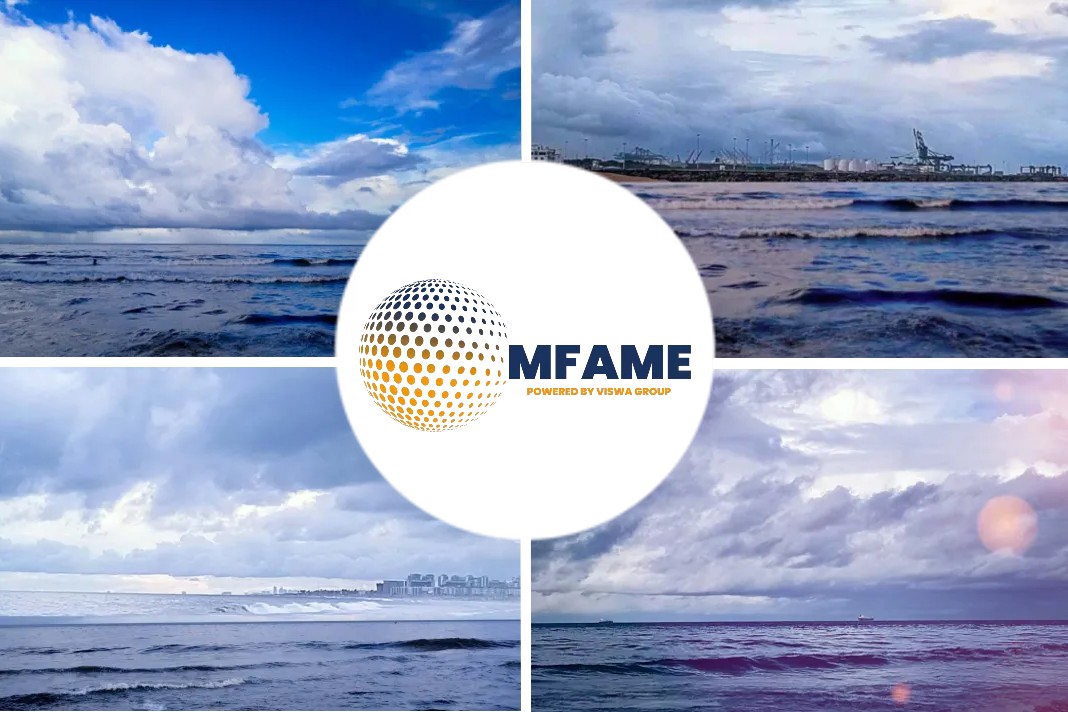- Ammonia could compete with diesel at $3.50/kg
- CMB looks to retrofit small craft fleet by 2024
- Policy framework will let hydrogen market grow
The CEO of the Belgian shipping company Compagnie Maritime Belge, Alexander Saverys, said that the company will run ammonia dual-fuel ships in new large vessels from 2024, reports Platts.
The move comes as the company navigates a transition away from fossil fuels, and expands its hydrogen refueling operations in Antwerp.
Ammonia dual fuel engines
From 2024, CMB’s large newbuilds will have ammonia dual fuel engines, while its ship deliveries for 2023-24 will be ammonia-ready, Saverys told S&P Global Platts in an interview.
“On our large vessels, we think ammonia is the fuel of the future, and we will build ammonia-fueled container vessels, dry bulk vessels and chemical tankers,” Saverys said June 28. “From 2024, our intention is to have dual fuel ammonia engines on board so that the vessels can burn ammonia.”
CMB owns and operates 139 vessels in dry bulk, container transport, chemical tankers and crew transfer vessels.
Saverys said ammonia as a marine fuel had a cost advantage over LNG. “When you look at the extra cost, everybody talks about LNG — and we’ve been looking at that for the last 10 years as well — the capex costs for an ammonia-fueled ship versus an LNG-fueled ship is half,” he said.
Ammonia supply was an issue
Saverys said Europe would be able to produce only a small portion of the green ammonia needed for the region’s marine fuel sector, and would be dependent on imports from large-scale renewable-powered facilities in countries such as Australia, Saudi Arabia, Morocco and Chile.
S&P Global Platts Analytics said in its Future Energy Outlooks Annual Guidebook 2021 that ammonia had advantages over hydrogen as a marine fuel, but still presented challenges.
“Although more energy-dense than hydrogen, ammonia still occupies significantly more space than diesel for the same amount of energy,” Platts Analytics said. “New vessel designs might be able to accommodate this, but retrofitted ships could end up losing a significant amount of cargo space to fuel storage.”
Hydrogen engines
CMB plans to fuel smaller boats in its fleet with hydrogen, with a delivery of four new hydrogen-fueled crew transfer catamarans expected from the third quarter of 2021 and by retrofitting the rest of its small craft fleet.
The smaller craft would have dual fuel diesel-hydrogen engines, as fuel cells were too expensive and fuel sourcing was an issue at some ports, Saverys said.
“The technology is not mature enough, it’s not reliable yet, you don’t have a backup with diesel,” he said. “So what we use now, and we’ll probably use for the next 10 years until for example fuel cells become cheaper and more reliable, are dual fuel, hydrogen-diesel engines, so we can always fall back on diesel, if no hydrogen is available.”
Pure hydrogen engines were more suited to fixed transport routes where ships or trucks returned to the same fueling point, or in stationary generators, Saverys added.
Multi-modal fueling
CMB opened a multi-modal hydrogen fueling station in Antwerp at the start of June to fuel ships, tube trailers, cars, trucks and buses, built by its cleantech division CMB.TECH in collaboration with Ekinetix, Ballast Nedam Industriebouw, Alpha Engineering, Maximator and Cummins.
The 1.2 MW electrolyzer can deliver 450 kg/day of hydrogen, powered by grid electricity, using guarantees of origin to source the power from renewables. One of CMB’s crew transfer vessels would use around 60 kg/day, while the Port of Antwerp’s hydrogen-fueled tugboat, which CMB will deliver next year, will take 400 kg/day.
Saverys said the fueling station had the capacity to deliver up to five times that amount with additional external supply, and added that the facility could be easily scaled up to meet growing demand.
Unlimited demand
Demand was virtually unlimited, Saverys said. The only constraints were availability of supply and the price.
“But I think when you look at the early movers, some of the customers that talk to us, they are willing to absorb the extra costs in the short term.”
Hydrogen prices needed to fall to below Eur2-3/kg ($2.38-3.57/kg) to compete with diesel in the shipping sector, from the Eur10/kg hydrogen pump prices widely seen across Europe today, Saverys said.
S&P Global Platts assessed the cost of producing renewable hydrogen via alkaline electrolysis in Europe at Eur5.05/kg June 30 (Netherlands, including capex). PEM electrolysis production was assessed at Eur6.27/kg.
Saverys said the cost of transport and the refueling infrastructure would not add a significant amount to the price of hydrogen at the pump.
Policy frameworks needed
CMB did not need subsidies for its renewable hydrogen projects, he said, but good policy frameworks were required.
Saverys said a 10-year charter contract for the Port of Antwerp tug justified CMB’s investment in the project. State funds could be used to develop infrastructure such as pipelines and terminals, he added.
Shipping companies are under pressure from customers as well as regulators to reduce their CO2 emissions, and Saverys said 2020 was a “change in mindset” for a lot of operators. That had spurred interest from other operators in CMB.TECH’s offering, which was enough to start building a renewable hydrogen and ammonia industry, he said.
Did you subscribe to our daily newsletter?
It’s Free! Click here to Subscribe!
Source: Platts
























